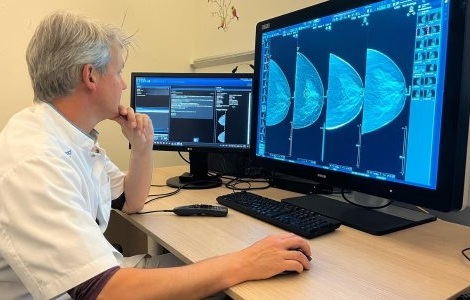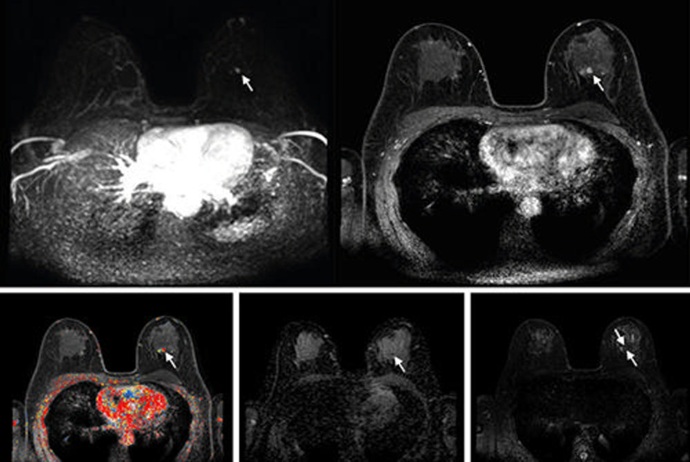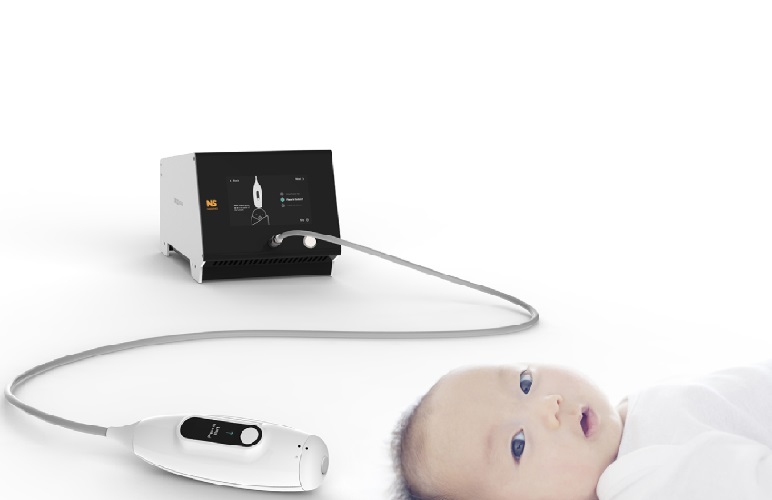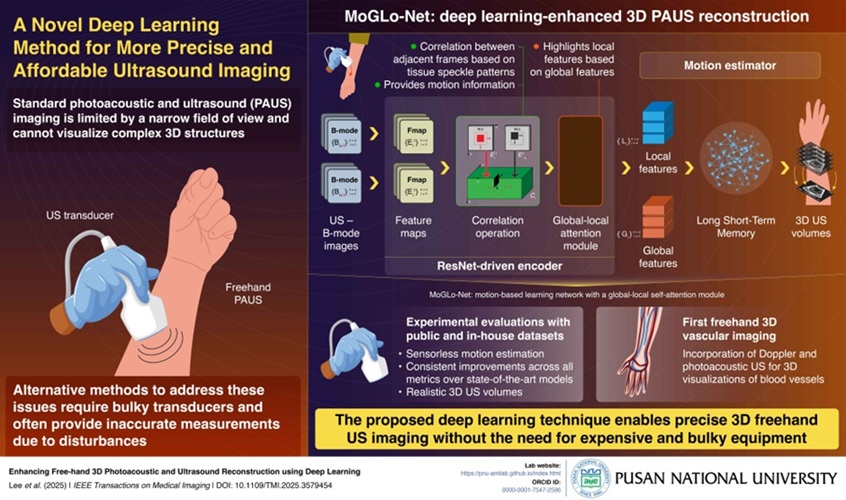Portable OCT Scanner Increases Access to Retinal Imaging
|
By MedImaging International staff writers Posted on 11 Jul 2019 |
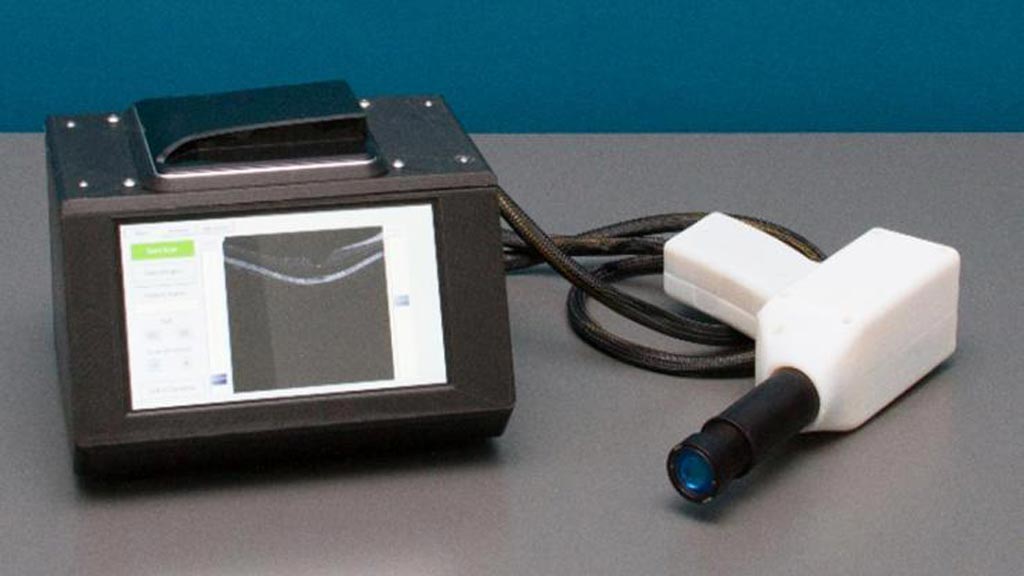
Image: A portable OCT system costs less than one-tenth of commercial systems (Photo courtesy of Adam Wax/ Duke University).
A lightweight optical coherence tomography (OCT) scanner offers clinically accurate eye scans at a fraction of the cost.
Developed at Duke University (Durham NC, USA), the spectral-domain OCT system was designed using various cost-reduction techniques, including parts that cost less than a tenth of the retail price of commercial systems, and a housing made mostly from three dimensional (3D)-printed plastic sections. In addition, the spectrometer light path is designed to be circular, thus reducing expansions or contractions due to temperature changes, which occur symmetrically; as a result, the optical elements remain aligned. The device also uses a larger detector to make misalignments less likely.
The low-cost OCT system offers an axial resolution of 8.0 μm, a lateral resolution of 19.6 μm, and an imaging depth of 2.7 mm, for a total 6.6-mm field of view in the X and Y directions. In a proof of concept study, clinical imaging was performed on 120 eyes of 60 patients (60 eyes of normal volunteers and 60 eyes with retinal disease) using both the low-cost OCT and a Heidelberg Engineering Spectralis OCT system. Contrast-to-noise ratio (CNR) was measured from resulting images to determine system performance.
The results showed that the new OCT scanner produced images that were 95% as sharp as those taken by the Heidelberg Spectralis, with mean CNR value of low-cost OCT images only 5.6% lower than those of the Spectralis. The new OCT scanner also weighs 15 times less than the commercial system and is much smaller. The total fabrication costs were just USD 5,037, a tenth of the cost of the Spectralis. The results of the study were published on June 28, 2019, in Translational Vision Science & Technology.
“Right now OCT devices sit in their own room and require a PhD scientist to tweak them to get everything working just right. Ours can just sit on a shelf in the office and be taken down, used and put back without problems. We've scanned people in a Starbucks with it,” said senior author biomedical engineer Adam Wax, PhD. “With the growing number of cases of diabetic retinopathy in places like the United States, India and China, we hope we can save a lot of people's sight by drastically increasing access to this technology.”
OCT is the optical analogue of ultrasound; but because light is so much faster than sound, measuring time is more difficult. To time the light waves bouncing back from the tissue being scanned, OCT devices use a spectrometer to determine how much their phase has shifted compared to identical light waves that have traveled the same distance, but have not interacted with tissue. In use since the 1990s, OCT has become the standard of care for the diagnosis of retinal diseases, including macular degeneration, diabetic retinopathy and glaucoma.
Related Links:
Duke University
Developed at Duke University (Durham NC, USA), the spectral-domain OCT system was designed using various cost-reduction techniques, including parts that cost less than a tenth of the retail price of commercial systems, and a housing made mostly from three dimensional (3D)-printed plastic sections. In addition, the spectrometer light path is designed to be circular, thus reducing expansions or contractions due to temperature changes, which occur symmetrically; as a result, the optical elements remain aligned. The device also uses a larger detector to make misalignments less likely.
The low-cost OCT system offers an axial resolution of 8.0 μm, a lateral resolution of 19.6 μm, and an imaging depth of 2.7 mm, for a total 6.6-mm field of view in the X and Y directions. In a proof of concept study, clinical imaging was performed on 120 eyes of 60 patients (60 eyes of normal volunteers and 60 eyes with retinal disease) using both the low-cost OCT and a Heidelberg Engineering Spectralis OCT system. Contrast-to-noise ratio (CNR) was measured from resulting images to determine system performance.
The results showed that the new OCT scanner produced images that were 95% as sharp as those taken by the Heidelberg Spectralis, with mean CNR value of low-cost OCT images only 5.6% lower than those of the Spectralis. The new OCT scanner also weighs 15 times less than the commercial system and is much smaller. The total fabrication costs were just USD 5,037, a tenth of the cost of the Spectralis. The results of the study were published on June 28, 2019, in Translational Vision Science & Technology.
“Right now OCT devices sit in their own room and require a PhD scientist to tweak them to get everything working just right. Ours can just sit on a shelf in the office and be taken down, used and put back without problems. We've scanned people in a Starbucks with it,” said senior author biomedical engineer Adam Wax, PhD. “With the growing number of cases of diabetic retinopathy in places like the United States, India and China, we hope we can save a lot of people's sight by drastically increasing access to this technology.”
OCT is the optical analogue of ultrasound; but because light is so much faster than sound, measuring time is more difficult. To time the light waves bouncing back from the tissue being scanned, OCT devices use a spectrometer to determine how much their phase has shifted compared to identical light waves that have traveled the same distance, but have not interacted with tissue. In use since the 1990s, OCT has become the standard of care for the diagnosis of retinal diseases, including macular degeneration, diabetic retinopathy and glaucoma.
Related Links:
Duke University
Latest General/Advanced Imaging News
- New Ultrasmall, Light-Sensitive Nanoparticles Could Serve as Contrast Agents
- AI Algorithm Accurately Predicts Pancreatic Cancer Metastasis Using Routine CT Images
- Cutting-Edge Angio-CT Solution Offers New Therapeutic Possibilities
- Extending CT Imaging Detects Hidden Blood Clots in Stroke Patients
- Groundbreaking AI Model Accurately Segments Liver Tumors from CT Scans
- New CT-Based Indicator Helps Predict Life-Threatening Postpartum Bleeding Cases
- CT Colonography Beats Stool DNA Testing for Colon Cancer Screening
- First-Of-Its-Kind Wearable Device Offers Revolutionary Alternative to CT Scans
- AI-Based CT Scan Analysis Predicts Early-Stage Kidney Damage Due to Cancer Treatments
- CT-Based Deep Learning-Driven Tool to Enhance Liver Cancer Diagnosis
- AI-Powered Imaging System Improves Lung Cancer Diagnosis
- AI Model Significantly Enhances Low-Dose CT Capabilities
- Ultra-Low Dose CT Aids Pneumonia Diagnosis in Immunocompromised Patients
- AI Reduces CT Lung Cancer Screening Workload by Almost 80%
- Cutting-Edge Technology Combines Light and Sound for Real-Time Stroke Monitoring
- AI System Detects Subtle Changes in Series of Medical Images Over Time
Channels
Radiography
view channel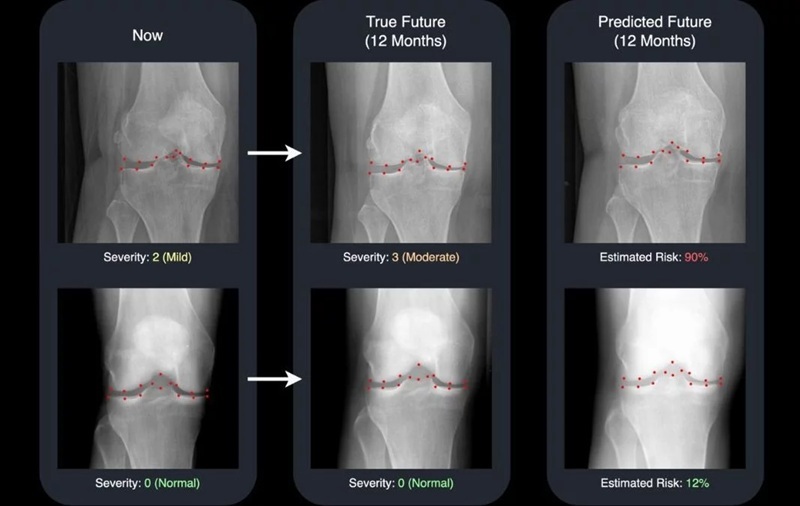
AI Generates Future Knee X-Rays to Predict Osteoarthritis Progression Risk
Osteoarthritis, a degenerative joint disease affecting over 500 million people worldwide, is the leading cause of disability among older adults. Current diagnostic tools allow doctors to assess damage... Read more
AI Algorithm Uses Mammograms to Accurately Predict Cardiovascular Risk in Women
Cardiovascular disease remains the leading cause of death in women worldwide, responsible for about nine million deaths annually. Despite this burden, symptoms and risk factors are often under-recognized... Read moreMRI
view channel
AI-Assisted Model Enhances MRI Heart Scans
A cardiac MRI can reveal critical information about the heart’s function and any abnormalities, but traditional scans take 30 to 90 minutes and often suffer from poor image quality due to patient movement.... Read more
AI Model Outperforms Doctors at Identifying Patients Most At-Risk of Cardiac Arrest
Hypertrophic cardiomyopathy is one of the most common inherited heart conditions and a leading cause of sudden cardiac death in young individuals and athletes. While many patients live normal lives, some... Read moreUltrasound
view channel
Ultrasound Probe Images Entire Organ in 4D
Disorders of blood microcirculation can have devastating effects, contributing to heart failure, kidney failure, and chronic diseases. However, existing imaging technologies cannot visualize the full network... Read more
Disposable Ultrasound Patch Performs Better Than Existing Devices
Wearable ultrasound devices are widely used in diagnostics, rehabilitation monitoring, and telemedicine, yet most existing models rely on lead-based piezoelectric ceramics that pose health and environmental risks.... Read moreNuclear Medicine
view channel
New Imaging Solution Improves Survival for Patients with Recurring Prostate Cancer
Detecting recurrent prostate cancer remains one of the most difficult challenges in oncology, as standard imaging methods such as bone scans and CT scans often fail to accurately locate small or early-stage tumors.... Read more
PET Tracer Enables Same-Day Imaging of Triple-Negative Breast and Urothelial Cancers
Triple-negative breast cancer (TNBC) and urothelial bladder carcinoma (UBC) are aggressive cancers often diagnosed at advanced stages, leaving limited time for effective treatment decisions.... Read more
New Camera Sees Inside Human Body for Enhanced Scanning and Diagnosis
Nuclear medicine scans like single-photon emission computed tomography (SPECT) allow doctors to observe heart function, track blood flow, and detect hidden diseases. However, current detectors are either... Read more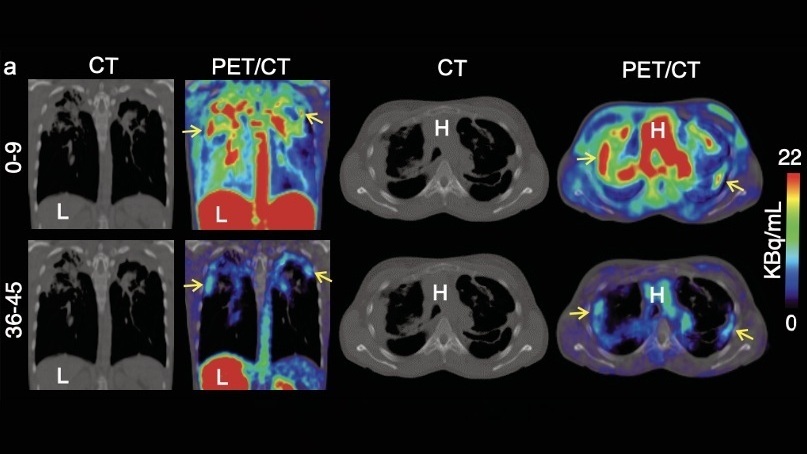
Novel Bacteria-Specific PET Imaging Approach Detects Hard-To-Diagnose Lung Infections
Mycobacteroides abscessus is a rapidly growing mycobacteria that primarily affects immunocompromised patients and those with underlying lung diseases, such as cystic fibrosis or chronic obstructive pulmonary... Read moreImaging IT
view channel
New Google Cloud Medical Imaging Suite Makes Imaging Healthcare Data More Accessible
Medical imaging is a critical tool used to diagnose patients, and there are billions of medical images scanned globally each year. Imaging data accounts for about 90% of all healthcare data1 and, until... Read more
Global AI in Medical Diagnostics Market to Be Driven by Demand for Image Recognition in Radiology
The global artificial intelligence (AI) in medical diagnostics market is expanding with early disease detection being one of its key applications and image recognition becoming a compelling consumer proposition... Read moreIndustry News
view channel
GE HealthCare and NVIDIA Collaboration to Reimagine Diagnostic Imaging
GE HealthCare (Chicago, IL, USA) has entered into a collaboration with NVIDIA (Santa Clara, CA, USA), expanding the existing relationship between the two companies to focus on pioneering innovation in... Read more
Patient-Specific 3D-Printed Phantoms Transform CT Imaging
New research has highlighted how anatomically precise, patient-specific 3D-printed phantoms are proving to be scalable, cost-effective, and efficient tools in the development of new CT scan algorithms... Read more
Siemens and Sectra Collaborate on Enhancing Radiology Workflows
Siemens Healthineers (Forchheim, Germany) and Sectra (Linköping, Sweden) have entered into a collaboration aimed at enhancing radiologists' diagnostic capabilities and, in turn, improving patient care... Read more












